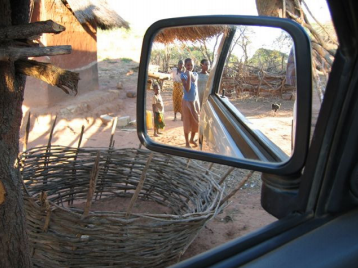Case-study /
Oxfam Southern Africa Climate Adaptation and Disaster Risk Reduction (Zambia)


Southern Zambia
Project description
SEI was commissioned by Oxfam Great Britain’s Southern Africa Regional Centre to advise on climate adaptation and disaster risk reduction (DRR). SEI’s work is informing Oxfam’s regional strategy for mainstreaming climate considerations into their programming for poverty reduction. SEI also worked at the local level to understand perceptions of risk and existing responses to climate stressors through a gender lens, and mapped the institutional landscape at the national level to identify government, donor and NGO activities on climate change and disaster risk reduction, with a view to Oxfam’s engagement. We reviewed the climate science for the region, focusing on Zambia.Key findings
Local understanding of climate variability and change
- In Zambia, farmers in the Monze District have recognised a general reduction in length of growing season and shifts in the onset of rainfall season. A report that emerged from the AIACC programme (Assessment of Impacts and Adaptation to Climate Change) recorded community awareness about floods, their vulnerability to climate stresses and their response strategies. Most respondents in Gwembe district in southern remember the worst flood years as 1973/74, 1984/85, and 2002/03 (MTENR, 2007). All three of these years had an annual rainfall total of above 889mm whereas the average rainfall is between 400 and 600mm a year.
- In Zambia, the impacts of these droughts and floods have included widespread crop loss, outbreaks of human and animal diseases, dislocation of human populations and destruction of property and infrastructure. In 2004/05 and 2006/07, the affected populations numbered 1,232,661 and 1,443,583 persons respectively. Droughts have also resulted in reduction of ground water resources thus lowering the water tables and thus drying of boreholes and streams. The loss of houses, household properties, livestock and animals due to climate related factors has also negatively affected the communities. Communities have been relocated from their old places. The increase in extreme rainfall events has forced most communities to resort in cutting down of trees for charcoal production and using the money generated by charcoal sales to supplement food and pay children’s school fees. The increase in populations near streams has negatively impacted on the riparian ecosystems. Rural women and children in Zambia are more vulnerable to climate variability and change due to cultural customs where women are required to do all the daily household chores (like looking for food, fetching water and fire wood).
- Given that climate change is expected to increase the frequency and intensity of disaster such as flood, droughts and cyclones, reducing the risk of disasters is a critical component of adapting to climate change. In many countries such as Zambia, disaster risk reduction is still a relatively new concept so there is no existing policy related to it.
